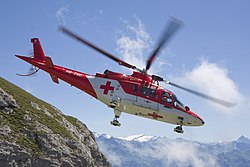This article needs additional citations for verification .(April 2024) |





Many modern naval vessels are capable of carrying and supporting aircraft, although only aircraft carriers and amphibious assault ships with full-length flight decks are truly dedicated to naval aviation, especially operation of fixed-wing aircraft. VTOL aircraft such as helicopters can however adapted well to most surface vessels as long as there is sufficient space on the top deck for safe takeoff and landing.
Contents
A majority of United States Navy (USN) ships have at least a stern helipad, capable of landing medium-sized naval helicopters for maritime patrol, search and rescue and anti-submarine missions. Many others even have hangars incorporated into the structure of the ship. It has become a standard part of modern ship design to have a deck that supports medium or large helicopters, as well as being able to house them in a hangar, for protection and maintenance.
Aside from aircraft carriers (hull symbol CVN) and amphibious assault ships (LPH, LHA and LHD), the USN has 12 classes of commissioned surface warships, 10 of which are aviation-capable. Two of those classes, patrol crafts (PC) and mine warfare vessels (AM), are due to be replaced by the more versatile littoral combat ship (LCS), at which point the entire USN surface war fleet will be aviation-capable. [1]
